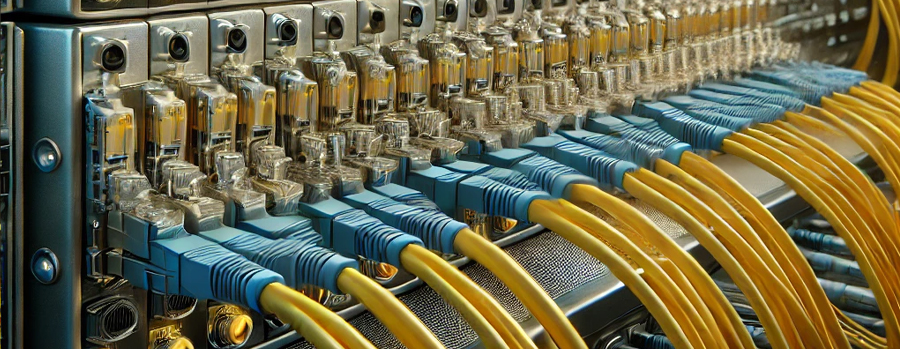GPON Splitters and Modules: The Backbone of Fiber Optic Networks
Today, Internet Service Providers (ISPs) are turning to advanced technologies such as Gigabit Passive Optical Networks (GPON) to deliver high-speed and reliable internet connections. These networks have the capacity to transmit large volumes of data quickly and efficiently. As one of the critical components of GPON technology, GPON Splitters and Modules play a vital role in distributing fiber optic signals to multiple users. In this article, we will examine what GPON Splitters and Modules are, how they work, and why they are so important in modern fiber optic networks.
What is GPON?
GPON (Gigabit Passive Optical Network) is a fiber optic network technology that provides high-speed data transmission. GPON distributes the optical signal from a central office (central location) to multiple users via fiber optic cables. This system is ideal for large-scale residential areas, businesses and public institutions. The main advantage of GPON technology is that it offers high bandwidth and can serve a wide geographic area.
What is a GPON Splitter?
A GPON Splitter is a passive device used to split the optical signal from a central GPON network to multiple users. This device separates a single optical signal into multiple signals, allowing data transmission to multiple end users over a fiber cable. GPON Splitters usually come in various ratios such as 1:2, 1:4, 1:8, 1:16 or 1:32, which means that you can split a single signal to a certain number of users.
What are GPON Modules?
GPON modules are optical transceivers or transceiver modules that enable GPON networks to operate. These modules convert optical signals into electrical signals and vice versa, allowing data to be transmitted over optical cables. GPON modules are generally used in OLT (Optical Line Terminal) and ONU (Optical Network Unit) devices. These modules are critical for ensuring reliability and performance in data transmission.
Advantages of GPON Splitters and Modules
- High Efficiency: GPON Splitters provide data transmission to many users from a single fiber optic cable, allowing more efficient use of the infrastructure.
Low Cost: Passive devices, GPON Splitters reduce costs because they do not require a power supply. They also reduce installation costs by enabling fiber optic networks to spread over a wider area.
Reliability: GPON modules offer high performance and reliability. They ensure that optical signals are transmitted accurately and without interruption.
Flexibility: GPON technology provides flexibility for networks of different sizes. GPON Splitters and modules can be customized and expanded according to the needs of the network. - Wide Bandwidth: GPON modules provide high bandwidth, allowing many users to receive high-speed internet service at the same time.
How Do GPON Splitters and Modules Work?
GPON Splitter Working Principle: GPON Splitter mechanically divides the incoming optical signal into multiple parts. During this process, the signal strength may decrease, but this decrease is usually not noticed by users. The split signals are transmitted to end users via fiber optic cables.
GPON Module Working Principle: GPON modules perform data transmission via optical signals. A GPON module located in the OLT converts optical signals into electrical signals and directs them to internet traffic. The module in the ONU converts the incoming optical signal into electrical signals and transmits them to the user’s devices.
Conclusion
GPON Splitters and Modules are critical components that form the backbone of modern fiber optic networks. These technologies are essential for providing high-speed and reliable internet connections. For ISPs and network administrators, the right selection of GPON Splitters and modules can both increase performance and reduce costs. GPON technology offers the flexibility and capacity to meet future network needs.






